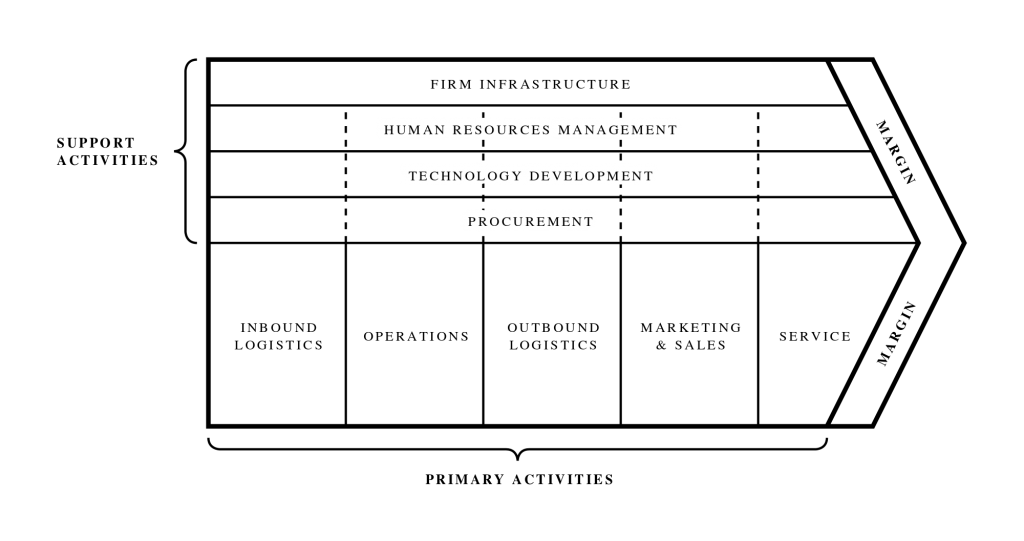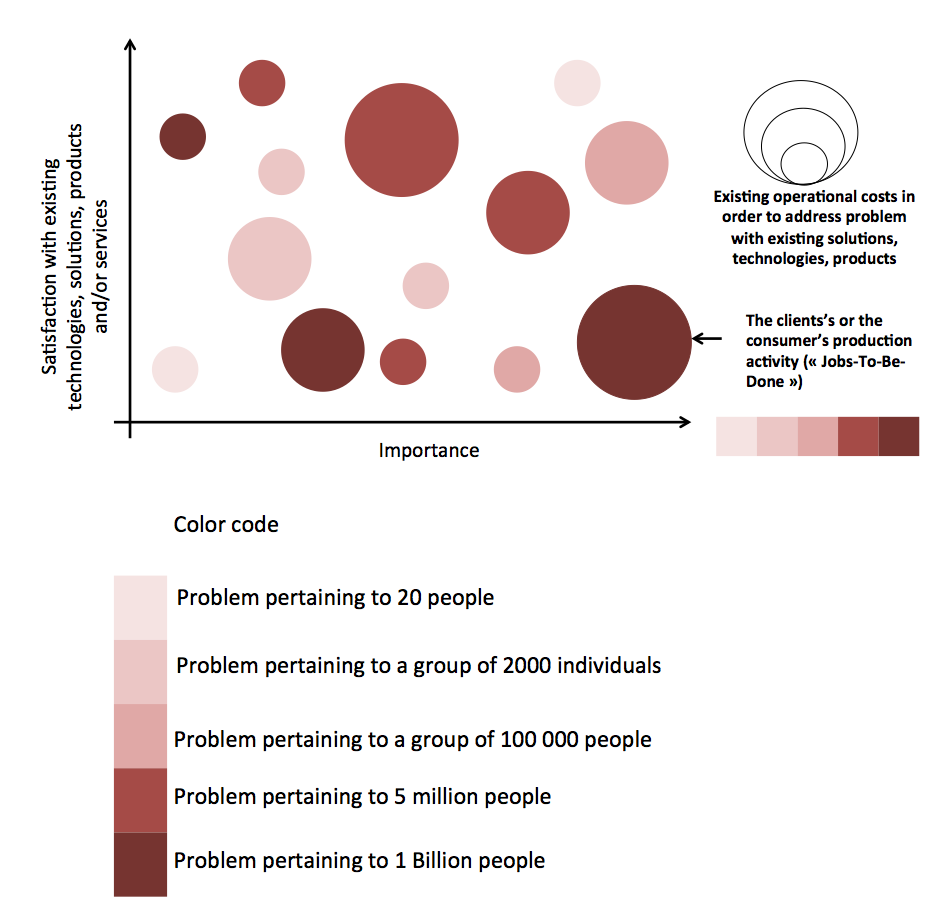How to use the innovation matrix? How to refer to the innovation matrix in order to leverage client verbatim? How to identify a relevant innovation opportunity based on informal conversations with consumers and/or clients? These are some of the questions I’d like to address in this article.
Using the innovation matrix the way Anthony Ulwick thought of it

Anthony Ulwick provided a first version of the innovation matrix. It was meant to be built based on quantitative figures which are the result of the questionnaire that’s been distributed to a large portion of clients and consumers, at least 600.
But in practice, many innovators don’t find the time to write out these questionnaires nor do they find the time to meet with their clients to go through an in-depth qualitative interview on their most pressing “jobs-to-be-done”. This is undoubtedly by unfortunate but that’s how things are. So I have been trying to think about another way to use the innovation matrix, one that is less time-consuming and that is still useful for innovators. I’ve also been trying to use to innovation matrix to express more ways to quality the innovation opportunity.
The new innovation matrix
The next innovation matrix builds upon Anthony Ulwick’s first version of the innovation matrix and adds two dimensions: existing operational costs and the prevalence.
So I thought that we could start out with the graph below by presenting it to clients and consumers. In the graph below, the innovator should start out by explaining that each bubble corresponds to a specific production activity ; this is, by the way, what Anthony Ulwick means when he talks about “Jobs-To-Be-Done”. For example, let’s assume that innovators talking to somebody listening to music. A relevant production activity could be to locate the items necessary to listening to music, such as a computer and a web browser in order to go on to a music-streaming website.
In a Business to Business context (B2B), each bubble represents a specific production activity. On a individual level, any Individual Contributor (IC), Manager, or Senior Leader have to complete a number of production activities every single day. These production activities—which may take the form of “To Do Lists”—are part of a more global value chain. Michael Porter has shown that companies bring together an infinite number of discrete production activities which are part of the global value chain as indicated below:

As indicated in the graph below, each bubble is positioned differently, according to multiple criteria, including: importance, satisfaction, market size and prevalence.

Innovation matrix – identifying innovation opportunities
No comment